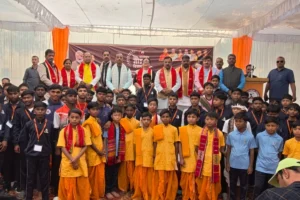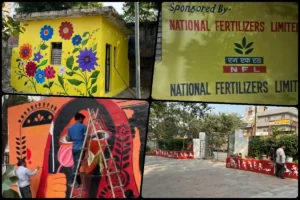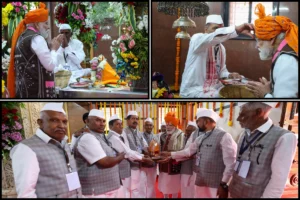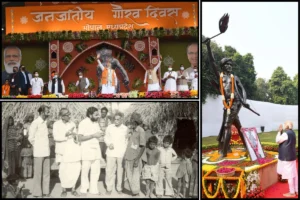
In a historic milestone marking entry into the vital second stage of India’s three-stage nuclear program, Prime Minister Narendra Modi witnessed today, the commencement of “Core Loading” at India’s first indigenous Fast Breeder Reactor (500 MWe) at Kalpakkam, Tamil Nadu.
The Prime Minister took a tour of the Reactor Vault and the Control Room of the Reactor. He was briefed about the salient features of this reactor.
India has developed comprehensive capabilities spanning the entire spectrum of the nuclear fuel cycle. The government had approved in 2003, the creation of Bhartiya Nabhikiya Vidyut Nigam Ltd (BHAVINI) to construct and operate India’s most advanced nuclear reactor-Prototype Fast Breeder Reactor (PFBR).
In line with the true spirit of Aatmanirbhar Bharat, PFBR has been fully designed and constructed indigenously by BHAVINI with significant contributions from more than 200 Indian industries including MSMEs. Once commissioned, India will only be the second country after Russia to have a commercially operating Fast Breeder Reactor.
The Fast Breeder Reactor (FBR) will initially use the Uranium-Plutonium Mixed Oxide (MOX) fuel. The Uranium-238 “blanket” surrounding the fuel core will undergo nuclear transmutation to produce more fuel, thus earning the name ‘Breeder’. The use of Throium-232, which in itself is not a fissile material, as a blanket is also envisaged in this stage. By transmutation, Thorium will create fissile Uranium-233 which will be used as fuel in the third stage. FBR is thus a stepping stone for the program’s third stage, paving the way for the eventual full utilization of India’s abundant thorium reserves.
Regarding safety, the PFBR is an advanced third-generation reactor with inherent passive safety features ensuring a prompt and safe plant shutdown in the event of an emergency. Since it uses the spent fuel from the first stage, FBR also offers a great advantage in terms of a significant reduction in nuclear waste generated, thereby avoiding the need for large geological disposal facilities.
Upon completion of the core loading, the first approach to criticality will be achieved, leading to the generation of power subsequently.
Notably, despite the advanced technology involved, the capital cost and the per-unit electricity cost are comparable to other nuclear and conventional power plants.
The growth of the Indian nuclear power program is imperative to meet the twin goals of energy security and sustainable development. As a responsible nuclear power with advanced technology, India remains committed to expanding peaceful applications of nuclear technology, both in the power and non-power sectors, while ensuring the security of nuclear and radiological materials.
To read more such news, download Bharat Express news apps






















